Story
Image: Disney
So the seemingly opposing ideas of Claude Coats and Marc Davis had somehow harmoniously converged together, and when Disneyland’s Haunted Mansion finally opened on August 9, 1969 (six years after it had first appeared in the park), it was an instant classic. The creepy, unsettling, darkly mysterious introduction (and unforgettable narration by Paul Frees as the “Ghost Host”) and the sing-along “Grim, Grinning” finale of memorable characters and gag-filled scenes somehow created an uneven ride that practically no one thinks of as uneven!
But for all the praise afforded to the Haunted Mansion, there’s one thing it’s missing... something lorded by Disney Parks spokespeople and Imagineers in every announcement and interview in the last twenty years: story.
Image: Disney via Doombuggies.com
Sure, the Haunted Mansion has a setting and emotional arcs and deeply beloved vignettes, but a narrative? Nope. And that’s no accident. According to legend, plots were floated for the attraction (everything from a vengeful sea captain and his widowed bride to the case of a cursed family) and the animatronic raven positioned in scenes throughout the ride is often cited as evidence that, at one time, designers planned on a continuous narrative and narrator throughout.
And indeed, the stretching room (and its unfortunate inhabitant), the ballroom, the bride, and the residents of the attic allude to a connected narrative… it’s just not there.
Image: Disney
In fact, the idea of a continuous story was dropped pretty early on in the ride's development.Evidently, it was ultimately decided that the mere musings of the disembodied Ghost Host were enough to carry us through the dark realms of the manor and that a traditional narrative would reduce the ride’s repeat appeal.
Ghosts on the go
There’s another peculiar piece to the Haunted Mansion’s legacy: how it’s been translated to be at home in subsequent Disney Parks around the globe.
When designers set to work on an attraction lineup for the new Magic Kingdom park at Walt Disney World, the Haunted Mansion was an obvious choice… but the New Orleans Square it was placed it at Disneyland wasn’t. Designers believed that the songs, sounds, smells, and stories of the French Quarter that had been evocative, exotic, and romantic for Californians would feel a little too familiar for Floridians. Given that the Southern influences of New Orleans were part of Florida’s DNA, too, even an idealized recreation of the South wasn’t “magic” enough for the Magic Kingdom.
Image: Disney
Instead, the rearranged park debuted with Liberty Square, a 1700s colonial port that would feel more like a fantastic journey for Disney World’s visitors. Fittingly, the expanded Haunted Mansion that opened there was placed in a redbrick gothic colonial manor perched on the edge of the Rivers of America.
Just a decade later, designers were putting the finishing touches on the plans for Tokyo Disneyland. Despite their efforts, the Oriental Land Company (who owns, operates, and oversees the Tokyo Disney Resort, simply paying licensing fees to Disney somewhat like a franchisee) was clear: they did not want their Disneyland to be fine-tuned for Tokyo; they did not want a Japanese Fantasyland or a Japanese Tomorrowland... They wanted Magic Kingdom, with its Western influences, Frontierland, and heavy Americana left intact.
Image: Disney / Oriental Land Company
So, Florida’s American colonial manor was recreated in Tokyo, but this time it was placed in the park’s Fantasyland (more closely aligned with the Japanese culture’s association with ghosts) and the manor was given some imposing “fantasy” elements, like griffon statues, shattered windows, a beautiful redbrick caretaker's gatehouse built into a rockface, and an impressive collection of crypts.
Perhaps unintentionally, the first three Haunted Mansions also set a unique precedent: by appearing in New Orleans Square, Liberty Square, and Fantasyland, the ride never appeared in the same “land” or context twice.
Image: Disney
While slight updates and upgrades to the three Haunted Mansions in California, Florida, and Japan helped each feel at home in its particular part of the world, nothing could compare to the concept’s fresh start in its fourth location…
La résistance
The opening of Tokyo Disneyland had spoiled the Walt Disney Company. The Oriental Land Company had practically balked at any consideration that their Disneyland should be culturally customized… and they were right. The Japanese flock to Tokyo Disneyland, merrily absorbing its American Space Age Tomorrowland, its American frontier Westernland, and its European Fantasyland as if they’d always been a part of Japanese culture, too.
In their next international attempt, Disney would meet... well… la résistance.
By time Disney decided to build their EuroDisneyland in the quaint, rural village Marne-la-Vallée outside of Paris, the French had already primed their pitchforks. With a fervor and fury matching that leveled against the Eiffel Tower a century earlier, critics descended on the planned Parisian resort. Before construction had started, the media had decreed the park a “cultural Chernobyl” and an invasion of American consumerism and imperialism.
A journalist at the center-right French newspaper “Le Figaro” wrote, "I wish with all my heart that the rebels would set fire to [Euro]Disneyland.”
Image: Disney
Disney was criticized (perhaps rightly) for requiring English to be spoken at meetings, and for enforcing the same Cast Member dress code required in the American parks, which the French considered “an attack on individual liberties” (illegal under French law unless it could be demonstrated that the restrictions were requisite to the job and did not exceed what was necessary… Disney countered that the restrictions were necessary in maintaining their brand identity).
EuroDisney felt doomed… Except that Disney had an answer.
Tony Baxter
We’ve spoken at length in our in-depth entries about Tony Baxter. There are a number of reasons. First, Baxter was among the earliest in a “second generation” of Imagineers who had seen Disneyland first as children… a sort of subjective viewpoint Walt and his designers simply couldn’t have.
Image: Disney
Second, Baxter’s career was born of the same story so many Disney Parks fans dream of. Working part time on Disneyland’s Submarine Voyage during college, his design projects were spotted by Imagineers, who hired him on and put him and Claude Coats to work designing Magic Kingdom’s Lost Legend: 20,000 Leagues Under the Sea – Submarine Voyage. The rest is history. We’re talking Big Thunder Mountain, Journey into Imagination and Star Tours, Splash Mountain, Indiana Jones Adventure…
Image: Disney
Baxter had proven himself, and was personally selected to serve as the creative director for the entire Disneyland Paris park. And he knew exactly what to do. Baxter and his team worked to deliberately recast the inherently American Disneyland into a deeply romantic, European, story-centered park.
Take Tomorrowland. The sleek, white, Space Age, NASA-inspired future brought to life in California, Florida, and Japan would be an affront to the French and have little resonance with them culturally. So it was scrapped. Instead, Disneyland Paris has Discoveryland.
Image: Disney
Rather than a sci-fi future, it’s a fantasy one, bringing to life the visions of great European thinkers like Jules Verne, H.G. Wells, and Leonardo da Vinci… Bubbling lagoons, gold and bronze towers, organic rocks, sails, hot air balloons, forested hillsides, zephyrs, and submarines… By creating a vision of the future rooted in the past, Baxter had created a world that European audiences could appreciate (while simultaneously giving a second lease on life to his most famous never-built Possibilityland: Discovery Bay).
Image: Disney
Perhaps the best example of this new, European shift was the park’s Space Mountain. A sleek, white, Space Age mountain of rockets zipping through the sci-fi cosmos wouldn’t do here, so it was replaced with a Lost Legend: Space Mountain – De la Terre à la Lune, a Victorian, literary adventure ride based on a famed novel by Jules Verne and the ensuing 20th century film by Georges Méliès.
And so it would go for each of the park's lands. Each would be reimagined from the ground up with a new, story-focused origin; a consistent continuity uniting each of the rides, shows, and attractions together into one overarching story. Whereas Disneyland in Anaheim had been built with a protective berm isolating the park from the outside world, every one of Disneyland Paris' lands would exist within their own berm, isolated from each other. The result is considered by many to be the most beautiful Disneyland-style park on Earth, somehow perfectly balancing the charm and comfort of Disneyland with the size and grandeur of Magic Kingdom.
Image: Disney
And it's there in this perfect literary park that the Haunted Mansion would appear again, located in a fourth land and a fourth context. Baxter and his team had developed the bravest conceptual shift yet… With a new, bilingual name (Phantom Manor / Fantôme Manoir, simpler than Haunted Manion, or Maison Hantée), the ride was ready for a new story.
On the next page, we’ll step into a Frontierland like you’ve never seen before and set off on a journey deep into the bowels of Phantom Canyon. Read on…
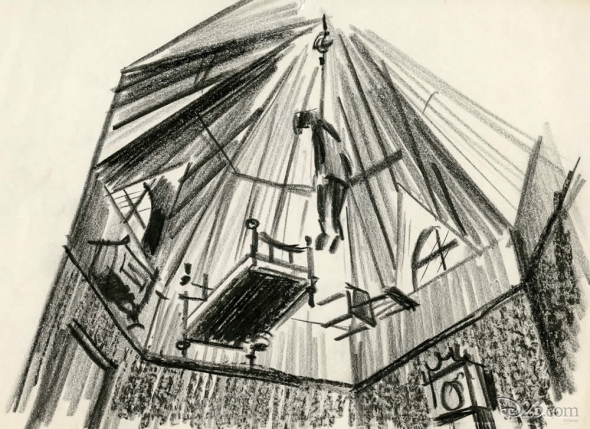
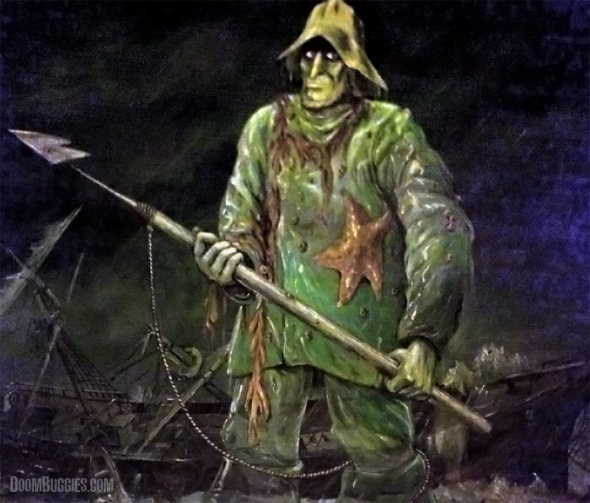
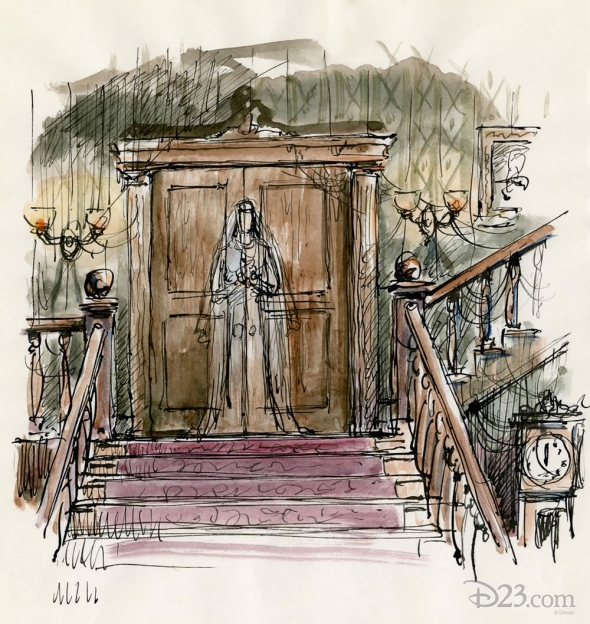
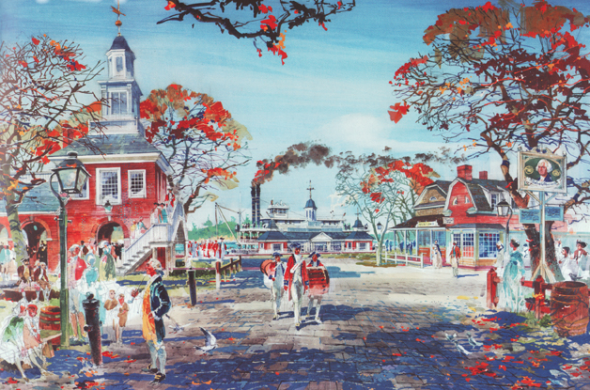
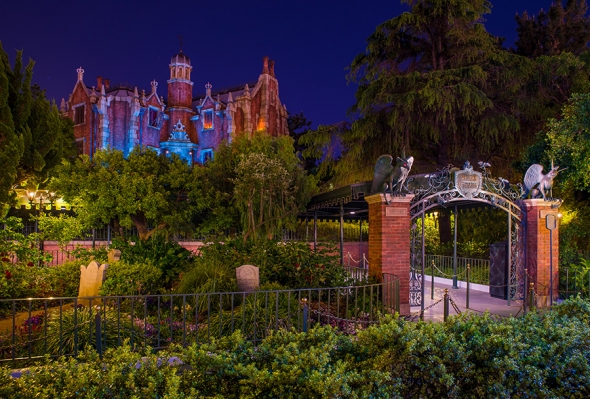
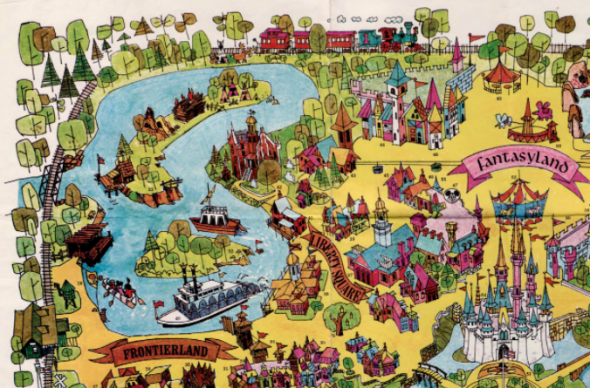

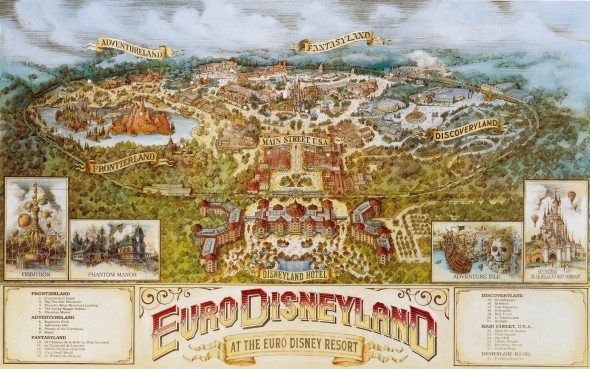
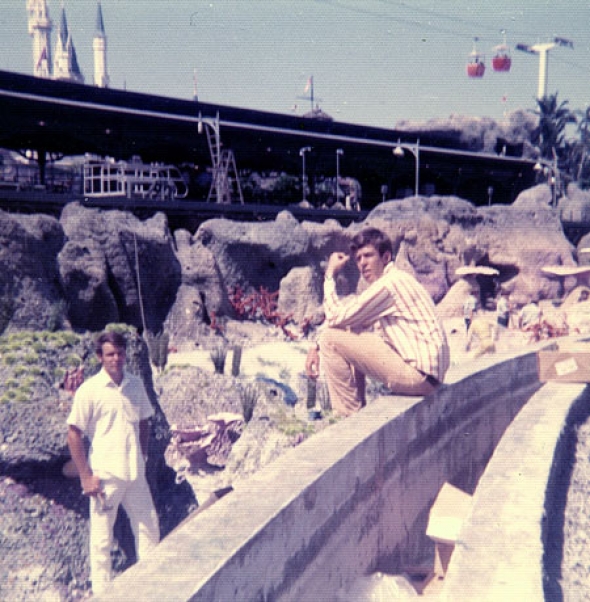
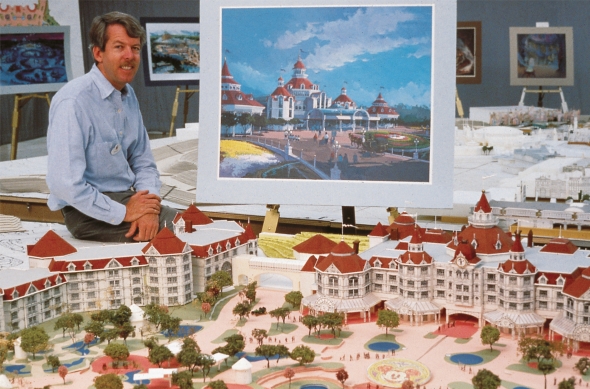
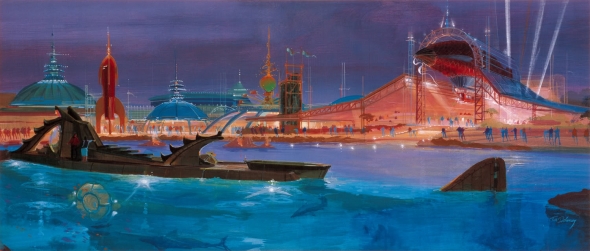
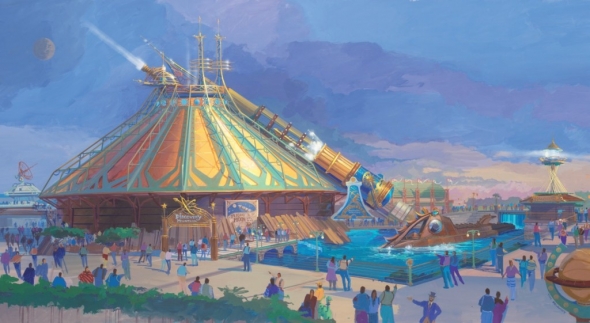
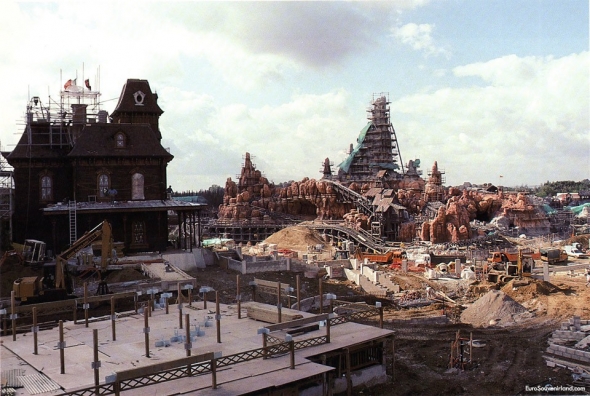

Comments
You know what's going to happen when these gondolas breakdown it was bad enough rescuing people from a thirty-year-old monorail system what's going to happen when the gondola breaks down
Was there yesterday in Paris. The ride has no waiting time. People are not interested to go in at all. When we walked in a cast member told us to wait while they got the ride ready. I can only imagine that because its so unpopular they turn things off or ride operators have other duties? Anyhow after waiting for about 5 mins the front door reopened and we went in. I had last been on this ride in 1998 as a kid. I was expecting it to be modern and upgraded. It was exactly the same. Very unfortunate but it felt terribly outdated. The effects were awful and the movements of the robots and holograms were jerky and the story was impossible to follow - too many ghostly laughs blaring out of the speakers. It felt shoddy, same as the Snow White ride. I really hope they improve the ride as there is a whole world of modern opportunities. Hopefully the next time I go the ride will be better and hopefully will attract new visitors.
Have been in several times. The Haunted Mansion "makeover" has not convinced me. Quite a lot (+95% ??) of the storyline, told in the article above, is impossible to follow on the spot. It feels like unnessessary blablabla, because simple cut-in-pieces narratives, without a KNOWN story (= a story known by everybody, locally, say in France, in larger parts of Europe..) behind the scenes, is fatally useless.
The Disney original concept (NO story at all), is a 1000 times stronger. Because, if that is the concept, visitors can BUILD their own stories on the spot...
µYou can se this in the original Haunted Mansion,
in the Original PoTC (please, throw out the whole Johnny Depp dumbness... it's destroying the ability to build your own interpretation of what you see, it's just referring to cinema CASH flow...),
in Eftelings Droomvlucht,
or in Eftelings Fata Morgana...
TOP dark ride attractions, NOT based on a story !! They are based on... emotions.
The whole theory that this Thunder Mesa bride story is enhancing the ride, is false. Most people do not even get what the multible appearances of a bride, in full "mortal" dress, has to do with ... GHOSTS ?
The attraction as such, is good, no doubt, but underperforming the Anaheim original. It's a TEMPLATE makeover job, and within the Disney imperium, therefore a weak rip off from their own original IP... quite hilarious.
If it had to be a "different" attaction, it had to be conceptualised and designed from scrap...
More, what is written in comment above already, the animatronics "quality class" is the lowest grade possible. We know that Efteling did 144 or so animatronics in their Fata Morgana attraction, and adopted a (75%...) cheaper technology to be able to build the dark ride at the limited budget, but amazingly, some of the FM animatronics perform MUCH better then those in Phantom Mannor. It has nothing to do with lack of maintenance, it's really about having installed "the most basic" Disney ever came around with.
And, the Mesa Canyon scene, is going completely OFF ghost theming... It's not because there are scattered around some parts of sceletons, that the scene is providing a ghostly impression (to say the least). The scene is way to "worldly" and fatally breaking off the "ghost ride experience". From this scene, the ride is dead, KILLED in it's own theme.... There is even way too much "worldly" light in it (a make NON believe disturbance), and all those crooked stiff animatronics...
I'm sorry, but nobody ever would build something convincing, be using the technique of cheap makeover. Work from scratch. Do your JOB as conceptualiser, storytellen and designer... this ride is like a nice pizza, where ingredients were omitted and added without a view on the whole taste effect, and with a slice cut out which was replaced by a piece of pancake with too much cinnamon, destroying the taste of the pizza when you eat it to the end.
A NO GO...
(Note, I'm writing from a viewpoint that I'm a theme park concept developer myself)